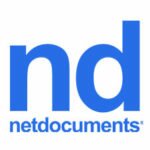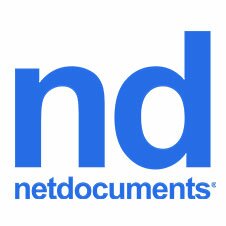NetDocuments: Document management vs. records management – What’s the difference and why does it matter?
Despite sharing many similarities, document management and records management serve very distinct purposes for your law firm or legal team. To ensure all of your critical documents and records are managed appropriately it’s important to understand the nuances of these disciplines including where they differ and where they overlap.
What is Document Management?
Document management refers to the way your team creates, edits, stores, locates, and shares documents every day. This can include everything from the tools you use to the workflows you follow — even a physical document storage system, if that’s how you roll (although we don’t recommend it).
But what does all this really accomplish? Let’s look at some of the goals of document management to find out.
The Purpose of Document Management
At a high level, the primary goal of document management is to make it possible for people to find what they need, when they need it. But there are a number off actors that can influence your success.
A strong document management strategy (and document management system, or DMS) supports that goal by helping to:
- Maintain version control
- Improve document search
- Digitise physical documents
- Avoid lost or misfiled documents
- Establish a single source of truth
- Keep documents and folders organised, including electronic documents
Of course, for law firms and legal teams, security and compliance are also high priorities — especially when teams are dispersed. Malicious behaviour and even simple human error can derail a document management strategy and expose your organisation to risk. That’s why it’s so important that you have processes and tools in place to control user access to documents, establish ethical walls, and prevent confidential information from leaving your secure system.
How a Document Management System (DMS) Helps
A DMS is a type of software that helps organisations manage documents using a suite of tools for securely storing, organising, modifying, and sharing documents — and that’s just the tip of the iceberg.
One of the key advantages of a DMS is that it simplifies and streamlines many of the processes that could undermine a solid document management strategy. It helps team members maintain document organisation without getting caught up in a web of complicated workflows (and throwing strategy out the window in a fit of frustration).
In addition to productivity-enhancing tools and features, another incredibly valuable aspect of a DMS is enhanced document security. Because confidentiality and compliance are so vital to legal work, no organisation can afford to overlook document security when choosing a DMS and building a document management strategy.
What is Records Management?
It’s likely your organisation deals with a lot of documents — but not all of them carry the same weight. In fact, only a certain subset of your documents will merit the special treatment known as records management.
So what falls into this category?
Typically, records include documents and other recorded information related to regulatory, operational, or fiscal business activities, such as contracts and agreements, insurance records, financial statements, employment applications, correspondence, case files etc.
The Purposes of Records Management
Ultimately, the purpose of keeping these records is to comply with laws and other regulations and protect your organisation from risk. For example, if your firm or company were audited, it may face significant fees or other penalties if records are not properly managed. The best defence is to have a complete set of evidentiary records. (A paper trail, if you will… even if there’s no actual paper involved.)
In addition to document management practices, an organisation may apply other processes and strategies to manage records, such as:
- Enforcing required retention periods for stored records
- Setting user access controls and preventing edits to the record
- Assisting with e-discovery or applying legal holds when needed
- Keeping an audit trail that documents how the record was managed from declaration to disposition
- Creating a records inventory to keep track of what records are held, sometimes called declaration and registration
- Managing physical and electronic document disposition (e.g. archiving, deleting, or destroying inactive records at the end of their lifecycle)
- Establishing clear policies and procedures for storing records, including retention schedules based on a record’s legal, fiscal, administrative, or historical value
How does records management software help?
Records management (RM) software allows you to capture, identify, store, and dispose of business records according to necessary policies, procedures, and regulations.
When a firm or corporation deals with a large volume of records, it’s often helpful to have a dedicated system that can support records management activities — from securing restricted files to maintaining a records inventory to managing disposition requests.
Why We Need Different Tools
While both systems deal with documents and other files, the purpose of records management and document management are quite different. And that means most teams will need different tools to effectively handle each discipline.
Using a document management system without a records management system (or vice versa) can create a number of problems, such as:
- Incomplete audit trails
- Unsecured documents and files
- Inefficient search and retrieval of files
- Non-compliance with legal requirements
- Difficulty accessing and collaborating on documents
- Accidental changes made to records after finalisation
- Time-consuming manual document disposition processes
- Expensive storage when files are kept past their retention period
- Duplicate content and/or confusion around working documents vs. records
- … and much more.
The reality is, you need both records management and document management systems to help your team stay productive, secure, and compliant.
To learn more about the advantages and disadvantages of different legal software types, plus how they overlap and complement each other, check out our Legal Technology Cheat Sheet.
How NetDocuments Can Help
NetDocuments is the leading cloud-based document management system. Our platform is designed to help legal professionals maximise productivity with a suite of robust tools that allow you to create, edit, store, locate, and collaborate on documents — anywhere, on any device, with award-winning security capabilities.
We believe that you should always have access to the best that technology has to offer, which is why NetDocuments integrates with numerous leading records management providers. This ensures that your processes stay streamlined and secure without sacrificing on features or expertise. And while NetDocuments is not a records management system, we do support document and records management best practices by allowing users to define document retention and archiving policies in the platform. This allows you to permanently delete and purge files based on criteria you choose.
By pairing your records management system with a powerful, secure, and flexible DMS like NetDocuments, you can ensure that your team has the best tools to do their best work.
To learn more about NetDocuments, get a 15 minute business assessment by calling (866) 638-3627 or click here to request a demo.



